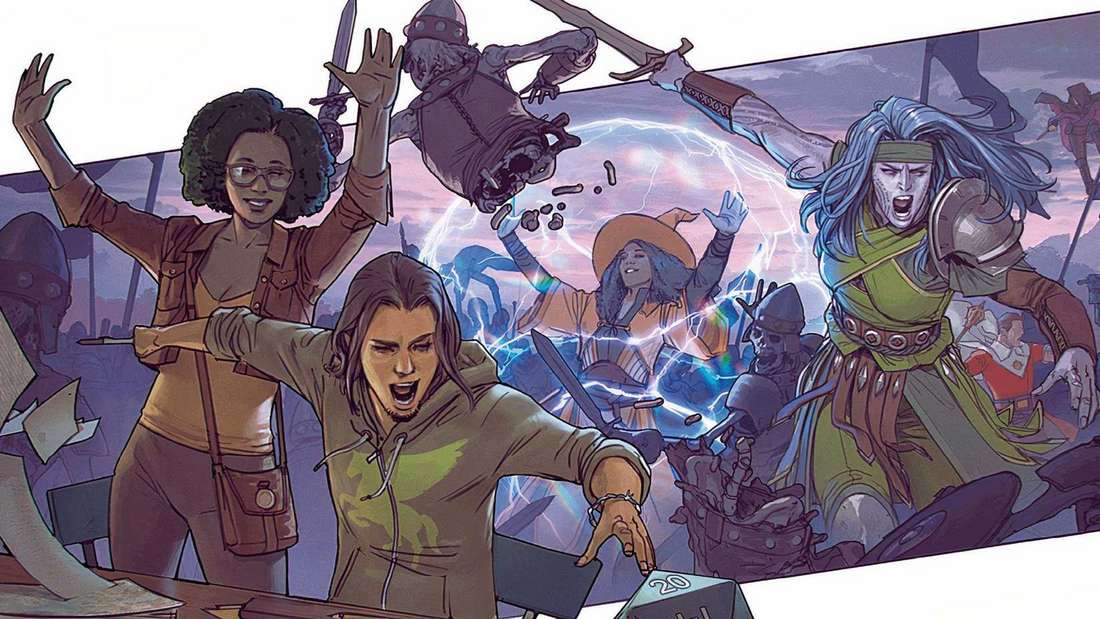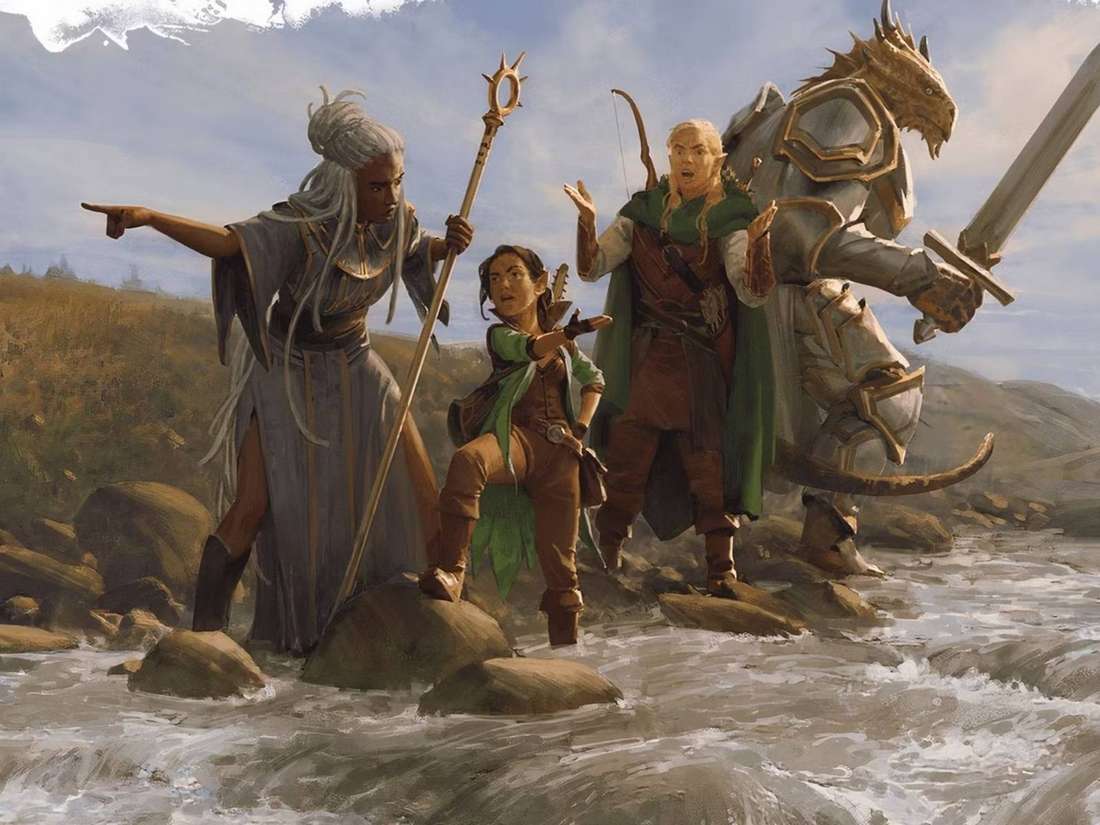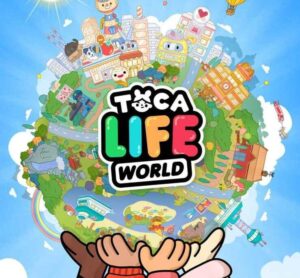Mastering the Introduction: Transforming Dungeons & Dragons into an Accessible Board Game Experience
Popular Now
 Stumble Guys
Stumble Guys
 Gacha Club
Gacha Club
 BeamNG.drive
BeamNG.drive
 Toca Boca World
Toca Boca World
 Auto X Drift Racing 3
Auto X Drift Racing 3
 The Legend of Zelda
The Legend of Zelda
 Minecraft
Minecraft
 Sonic the Hedgehog™ Classic
Sonic the Hedgehog™ Classic
 Genshin Impact
Genshin Impact
 League of Legends
League of Legends
 The journey into Dungeons & Dragons can feel daunting for newcomers, with its extensive rule sets, intricate character sheets, and open-ended nature. However, introducing friends to the ultimate tabletop RPG doesn’t have to be an overwhelming experience. By strategically approaching your introductory session, you can effectively present D&D not as a complex role-playing system, but as an engaging, cooperative board game. This technique, focused on simplifying rules and visualizing mechanics, is key to making the game immediately fun and accessible, boosting its market appeal and making it a top search result for “how to play D&D with friends” and “easy RPG starter kits.”
The journey into Dungeons & Dragons can feel daunting for newcomers, with its extensive rule sets, intricate character sheets, and open-ended nature. However, introducing friends to the ultimate tabletop RPG doesn’t have to be an overwhelming experience. By strategically approaching your introductory session, you can effectively present D&D not as a complex role-playing system, but as an engaging, cooperative board game. This technique, focused on simplifying rules and visualizing mechanics, is key to making the game immediately fun and accessible, boosting its market appeal and making it a top search result for “how to play D&D with friends” and “easy RPG starter kits.”
This approach significantly reduces the cognitive load for new players, allowing them to focus on the core appeal of fantasy adventure and collaborative storytelling. The success of this method lies in how you manage the presentation of the game’s complexity, turning intimidating rulebooks into simple, easily digestible elements.
 The Board Game Mindset: Structuring Your D&D Session
The Board Game Mindset: Structuring Your D&D Session
To teach D&D effectively, you must first adopt the mindset of a board game designer. Board games are defined by clear objectives, limited choices, and obvious visual feedback. Your introductory session should emulate these principles. This is where strategic choices about the campaign, character design, and D&D mechanics become essential for a low-friction onboarding experience, making it an excellent resource for beginner D&D guides and family gaming recommendations.
The following tips are optimized to translate the core D&D experience into a format new players will instantly recognize from their experience with modern board games:
- Simplify Character Creation to Selection: Pre-generate a small roster of classic, archetype characters. Instead of an hour-long session of rule reading, present players with four choices: the Fighter, the Rogue, the Wizard, and the Cleric. Give them a concise, single-paragraph description of the character’s personality and their two main actions. This makes the crucial first step feel like picking a pawn in a game, not filling out a tax form.
- Visual Aids are Your Map: Utilize a printed grid map or a simple battle mat for combat encounters. Crucially, use miniatures (even simple tokens or printed standees) for all creatures and characters. This visual representation immediately grounds the game in the familiar territory of a tactical board game, making movement and positioning intuitive.
- Create a “Rule Reference Card”: Design a small, laminated card for each player that contains only the most essential information.
This reference card should include:
- The Core Mechanic: “Roll a d20 and add a number (your Modifier). Try to beat the Difficulty Class (DC) of 10 or 15.”
- Combat Flow: “Move (up to 30ft), then Action (Attack, Cast a Spell, or Dash).”
- Saving Throws: A list of the six core stats (Strength, Dexterity, etc.) and their associated bonus for quick reference.
Streamlining Core Mechanics for Immediate Player Engagement
The most significant hurdle for new players is the sheer volume of D&D rules. To create a board game-like flow, you must temporarily remove or simplify mechanics that are not critical to the immediate adventure. The goal is to maximize the speed of play and the frequency of “cool” moments, which is vital for maintaining the interest of players used to fast-paced digital entertainment and short-session board games.
StrongCombat and Spellcasting Optimization:
- The “Damage-Only” Approach: For the first session, ignore complex conditions like Grappled, Prone, or Frightened. Focus solely on Attack Rolls, Armor Class (AC), and Damage. Tell the players, “If you hit the monster’s AC, you roll damage.” This simplifies the most complex part of the game.
- **Limit Spell Choices to Three: A Wizard’s full spell list is a massive deterrent. Restrict each spellcaster to three core, impactful spells (e.g., Magic Missile, Fire Bolt, and one utility spell like Mage Armor). Write the full, easy-to-read text of these three spells directly on their reference card. This focuses them on powerful, memorable actions.
- Forget Exhaustion and Encumbrance: Any rule that slows the action or requires bookkeeping outside of hit points should be temporarily sidelined. Keep the pace moving, which is a critical characteristic of a highly-rated strategy board game.
StrongSkill Checks and Roleplaying Guidance:
- The “Stat-Check Only” Skill System: Ignore the detailed list of skill proficiencies (Athletics, Acrobatics, Perception, etc.). Instead, when a player attempts an action, ask them, “Which of your six main stats helps you do that?” If they want to leap a chasm, it’s a Strength Check. If they want to hide, it’s a Dexterity Check. This forces them to engage with the character sheet’s primary numbers and simplifies the decision-making process.
- The “Three-Choice” Dialogue System: New players struggle with open-ended role-playing. When they encounter a key Non-Player Character (NPC), offer them three clear, board game-style choices for their dialogue: (1) Intimidate/Threaten, (2) Persuade/Charm, or (3) Deceive/Lie. This gives a clear framework for their actions and what dice roll (and associated skill check) they will need to use.
 Designing the Perfect Introductory One-Shot Adventure
Designing the Perfect Introductory One-Shot Adventure
The choice of adventure is paramount. Your first D&D campaign should resemble a concise, structured scenario—a one-shot akin to a cooperative board game with a clear beginning, middle, and end. This structure ensures a satisfying conclusion and prevents players from feeling lost in an endless, formless world.
To maximize success, focus on a high-value scenario with a clear goal:
- The “Dungeon Delve” Goal: The classic “Go to the place, kill the monster, get the treasure” is the most effective. For instance: “The farmers’ guild will pay 500 gold pieces (high-value D&D investment) if you retrieve the stolen magical artifact from the Goblin Lair.”
- Limited Scope: The adventure should last no more than three hours, roughly the time commitment of a substantial strategy board game. It should feature four to six encounters total: a social encounter (the quest giver), a challenge (a locked door or trap), two combat encounters, and the final boss fight.
- No TPK (Total Party Kill): For the first session, the goal is not difficulty but victory. Adjust monster HP or damage on the fly to ensure the players succeed. This creates a positive first impression and guarantees a successful, memorable “win” condition, making them eager to invest in the next session and potentially purchase D&D supplements and gaming accessories.
By implementing these structured, simplified, and visually-supported techniques, you transform the intimidating scope of Dungeons & Dragons into a fun, cooperative experience that mirrors the accessibility of a great fantasy board game. You’re not just teaching rules; you are selling the fantasy, which is the most effective form of long-term player engagement in the role-playing gaming sector.
Would you like me to outline a sample introductory adventure that follows this board game structure?








